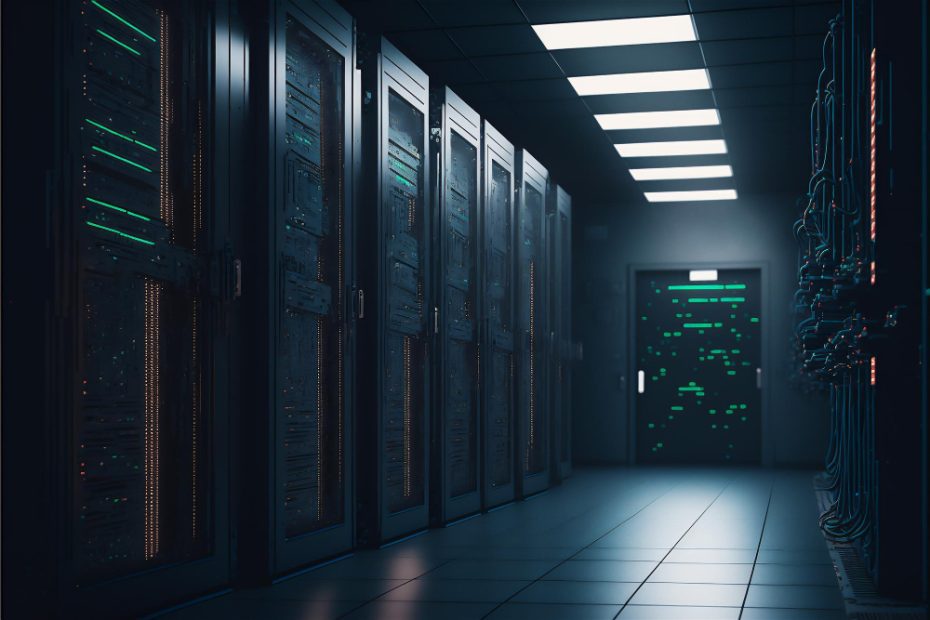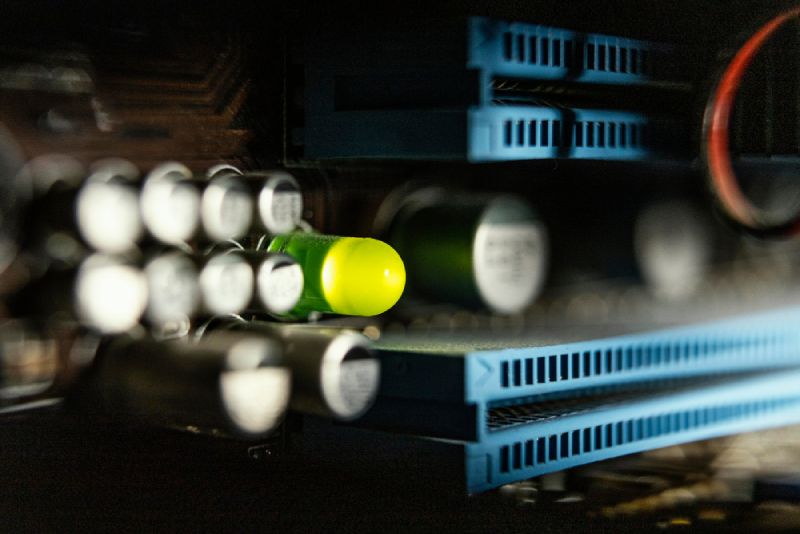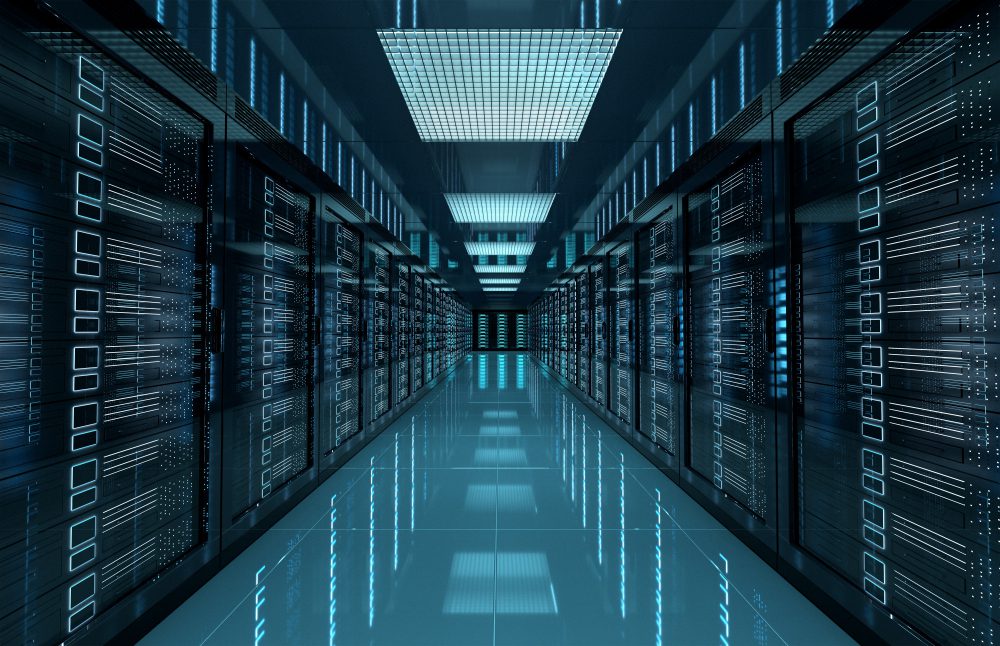Is 8GB RAM enough for 1TB SSD?
The combination of RAM and storage is an important factor to consider when building or upgrading a computer. The RAM (Random Access Memory) determines how much data your computer can process at once, while the SSD (Solid State Drive) determines how much storage space you have for your files and applications. In this article, we will explore whether 8GB of RAM is sufficient when paired with a 1TB SSD.
The Role of RAM
RAM plays a crucial role in your computer’s performance. It serves as a temporary storage space for data that is actively being used by the CPU. The more RAM you have, the more data your computer can store and access quickly, resulting in smoother multitasking and faster overall performance.
However, the amount of RAM you need depends on the tasks you typically perform on your computer. If you primarily use your computer for basic tasks such as web browsing, word processing, and streaming media, 8GB of RAM is often considered sufficient. It provides enough memory to handle these tasks smoothly without causing significant slowdowns.
On the other hand, if you engage in resource-intensive activities such as video editing, gaming, or running virtual machines, you will likely benefit from having more than 8GB of RAM. These tasks require a larger amount of memory to handle the complex calculations and data processing involved.
The Impact of Storage Capacity
While RAM affects the speed at which your computer operates, the storage capacity provided by an SSD determines how much data you can save on your computer. A 1TB SSD offers ample space to store a vast array of files, including documents, photos, videos, and applications.
It is important to note that RAM and storage capacity are not directly related. Upgrading your storage from a traditional hard drive to a 1TB SSD will significantly improve the speed at which your computer reads and writes data. However, it does not directly impact the amount of RAM available for your computer to use.
“Having a larger storage capacity does not compensate for insufficient RAM when it comes to multitasking or running memory-intensive applications.”
While a 1TB SSD provides ample storage space, it does not necessarily mean your computer will perform better if you lack sufficient RAM. The two components serve different purposes and are both essential for optimal performance.
Optimizing Performance
To ensure that your computer performs at its best, it is crucial to strike a balance between RAM and storage capacity. If you find that your computer is running slow or struggling to handle multiple tasks, consider upgrading your RAM to a higher capacity.
In summary, 8GB of RAM is typically sufficient for basic tasks and everyday computing. However, if you engage in resource-intensive activities or require more multitasking capabilities, upgrading to a higher amount of RAM would be beneficial. Remember that the storage capacity provided by a 1TB SSD does not replace the need for adequate RAM.
Ultimately, the ideal combination of RAM and storage capacity depends on your specific needs and usage patterns. Assessing your computing requirements and considering the demands of the tasks you regularly perform will help you make an informed decision about whether 8GB of RAM is enough for a 1TB SSD.
Why Add More RAM to a NAS?
When it comes to a Network Attached Storage (NAS) device, many people focus on storage capacity. However, the amount of RAM in your NAS is also an important factor to consider. In this article, we will discuss why adding more RAM to your NAS can significantly enhance its performance and functionality.
1. Improved File Transfer Speeds
One of the primary benefits of increasing the RAM in your NAS is improved file transfer speeds. With more RAM, your NAS can store larger amounts of data in memory, resulting in faster read and write operations. This is particularly beneficial when dealing with large files or multiple users accessing the NAS simultaneously.
2. Enhanced Multi-Tasking Abilities
Adding more RAM to your NAS enables it to handle multiple tasks more efficiently. With additional memory, the NAS can allocate resources to different processes simultaneously, reducing the chances of slowdowns or bottlenecks. This is especially crucial for businesses or individuals who rely on their NAS for various operations such as streaming media, file sharing, or hosting virtual machines.
3. Increased Number of Concurrent Connections
A NAS with limited RAM might struggle to handle a high number of concurrent connections. By upgrading the RAM, you can increase the number of users that can access the NAS simultaneously without experiencing degraded performance. This is especially beneficial for businesses or households with multiple devices connected to the NAS at any given time.
4. Expand Storage Capabilities
Having more RAM in your NAS can also expand its storage capabilities. Some NAS systems allow for RAM expansion, which can be used to create a cache for frequently accessed files. This cache effectively speeds up access to commonly used data and reduces reliance on slower hard drives. It’s like having a temporary high-speed storage layer that can greatly enhance overall performance.
5. Better Application Support
Lastly, adding more RAM to your NAS can provide better support for various applications. Certain applications, such as media servers or virtual machine managers, require a higher amount of memory to run smoothly. By increasing the RAM, you can ensure that these applications have enough resources to function optimally and avoid potential crashes or slowdowns.
“Increasing the RAM in your NAS can significantly enhance its performance and functionality.”
In conclusion, upgrading the RAM in your NAS offers numerous benefits, including improved file transfer speeds, enhanced multi-tasking abilities, increased number of concurrent connections, expanded storage capabilities, and better application support. Whether you use your NAS for personal or business purposes, investing in more RAM can unlock its full potential and provide a smoother and more efficient user experience.
How many GB should I leave free on my SSD?
A solid-state drive (SSD) is a popular choice for storage due to its fast performance and reliability. However, it is important to leave some free space on your SSD to maintain its optimal performance and lifespan. In this article, we will discuss how much GB you should keep free on your SSD.
Why should you leave free space on your SSD?
SSDs use a technology called NAND flash memory to store data. Unlike traditional hard disk drives (HDDs), SSDs have limited program-erase cycles. This means that writing data to an SSD wears down its memory cells over time. To prevent premature wear and extend the lifespan of your SSD, it is recommended to leave some free space.
How much free space is ideal?
The general rule of thumb is to leave at least 10-20% of your total SSD capacity free. For example, if you have a 500GB SSD, you should aim to keep 50-100GB free. This allows the SSD to perform wear-leveling algorithms, which evenly distribute data across the memory cells and prevent excessive wear on specific areas.
What happens if you fill up your SSD?
If you fill up your SSD to its maximum capacity, several issues can arise. Firstly, the performance of your SSD may significantly degrade, as there is limited free space for temporary files and caching. This can result in slower boot times, longer file transfer speeds, and overall system slowdowns.
In addition, when an SSD is full, it has less available memory cells to perform garbage collection and wear leveling. This can lead to more frequent write amplification, which reduces the lifespan of the SSD. Ultimately, filling up your SSD can decrease its performance and shorten its overall lifespan.
Best practices for optimizing SSD performance
- Keep at least 10-20% free space on your SSD.
- Avoid storing large files or rarely accessed data on your SSD.
- Regularly clean up unnecessary files and folders.
- Disable hibernation mode, as it requires a large amount of space for the hibernation file.
- Use an external HDD or cloud storage for long-term data storage.
Remember, having some free space on your SSD is crucial for maintaining its performance and longevity. By following these best practices, you can ensure that your SSD operates optimally and lasts for years to come.
Can you add RAM to a NAS?
A Network Attached Storage (NAS) device is a convenient and efficient way to store and access data on a network. It can be used for personal or professional purposes, providing a centralized storage solution for files, media, and backups. While a NAS typically comes with a certain amount of built-in RAM, you may wonder if it is possible to upgrade or add more RAM to enhance its performance.
The answer depends on the specific model of your NAS device. Some NAS manufacturers offer models with upgradable RAM slots, allowing users to increase the system’s memory capacity. These models typically come with one or more empty RAM slots, enabling users to install additional RAM modules for improved performance.
Benefits of adding RAM to a NAS:
- Improved multitasking capabilities: Adding more RAM allows your NAS to handle multiple tasks simultaneously without slowing down.
- Enhanced data transfer speeds: Increased RAM can improve the speed at which data is processed, leading to faster file transfers and access times.
- Better performance for resource-intensive applications: If you use your NAS for tasks such as media streaming or virtualization, additional RAM can help ensure smooth performance.
Before attempting to add RAM to your NAS, it is important to check the manufacturer’s specifications and guidelines. Some NAS devices may have limitations on the maximum amount of RAM they can support or require specific types of RAM modules.
Note: Modifying hardware components of a NAS may void warranty agreements, so proceed with caution and consider seeking professional assistance if you are unsure.
If your NAS supports RAM upgrades, the process usually involves:
- Identifying the RAM slot(s) on your NAS device.
- Purchasing compatible RAM modules based on the manufacturer’s specifications.
- Powering off the NAS and removing any necessary covers or panels to access the RAM slots.
- Gently inserting the new RAM module(s) into the empty slot(s).
- Replacing the covers or panels and powering on the NAS.
Keep in mind that increasing the RAM may not always be necessary for all NAS users. If you primarily use your NAS for basic file storage and occasional backups, the default amount of RAM provided by the manufacturer might be sufficient for your needs. However, if you notice performance issues or plan to use resource-intensive applications, upgrading the RAM could be a viable solution.
In conclusion, adding RAM to a NAS can potentially improve multitasking capabilities, data transfer speeds, and overall performance. It is important to consult the manufacturer’s guidelines before attempting any hardware modifications. Consider the specific requirements of your NAS usage to determine whether additional RAM is necessary for optimal performance.
What is the Lifespan of a SSD?
SSD, or Solid State Drive, is a type of storage device that is commonly used in computers and laptops. Unlike traditional hard disk drives (HDD), SSDs have no moving parts and use flash memory to store data. This makes them faster, more reliable, and less prone to mechanical failure. However, like all electronic devices, SSDs have a limited lifespan.
How long do SSDs last?
The lifespan of an SSD depends on several factors, including the quality of the drive, the amount of data being written to it, and how it’s used. On average, a consumer-grade SSD can last anywhere from 3 to 10 years. Some high-end SSDs, designed for enterprise use, can exceed this range.
One of the key factors affecting the lifespan of an SSD is the number of write cycles it can endure. Each time data is written to an SSD, it uses up a portion of its program-erase cycles, which are finite. However, modern SSDs have advanced wear-leveling algorithms and over-provisioning techniques, which distribute writes evenly across the drive and help extend its lifespan.
Factors that affect SSD lifespan
Several factors can impact the lifespan of an SSD:
- Workload: SSDs used in high-intensity workloads, such as servers or gaming PCs, may wear out faster due to frequent write operations.
- Temperature: Excessive heat can degrade the performance and lifespan of an SSD. It’s important to keep the drive cool, especially during heavy usage.
- Power failures: Abrupt power loss can cause data corruption or damage to an SSD. Using a reliable power supply and surge protector can help mitigate this risk.
“While SSD lifespan is a concern, most modern SSDs have a significantly longer lifespan than traditional hard drives.”
Managing SSD lifespan
To maximize the lifespan of an SSD, consider implementing the following practices:
- Enable TRIM: TRIM is a command that helps optimize SSD performance and extend its lifespan by allowing the operating system to inform the SSD which blocks are no longer in use.
- Regular backups: Keeping regular backups of your data ensures that even if your SSD fails, your important files will still be accessible.
- Monitor health: Many SSD manufacturers provide software tools that allow you to monitor the health and performance of your SSD. Regularly checking these metrics can help detect any potential issues early on.
In conclusion, while the lifespan of an SSD is finite, with proper care and usage, it can last for several years. SSDs offer faster performance and greater reliability compared to traditional hard drives, making them a popular choice for many computer users.
Can a SSD last 20 years?
SSDs, or solid-state drives, have become increasingly popular in recent years due to their faster speeds and greater reliability compared to traditional hard disk drives (HDDs). However, there is some debate around the lifespan of SSDs and whether they can truly last for 20 years or more.
The Technology Behind SSDs
SSDs use NAND flash memory to store data, which is different from the magnetic storage used in HDDs. This flash memory has a limited number of write cycles before it starts to degrade, which raises concerns about the longevity of SSDs.
Factors Affecting SSD Lifespan
Several factors influence the lifespan of an SSD:
- Write Endurance: The measure of how many times data can be written to the SSD before it starts to degrade.
- Overprovisioning: The allocation of extra space within the SSD for wear leveling and error correction.
- Operational Environment: Factors such as temperature, humidity, and usage patterns can impact the lifespan of an SSD.
SSD Lifespan Estimation
Estimating the lifespan of an SSD can be challenging as it depends on individual usage patterns, drive quality, and other factors. However, most modern consumer-grade SSDs have a write endurance rating that exceeds what an average user would encounter in 20 years.
“While it is difficult to provide a precise time frame, it is safe to say that with normal consumer use, an SSD should last well beyond its warranty period.”
Tips to Extend SSD Lifespan
To maximize the lifespan of your SSD, consider implementing the following practices:
- Enable Trim: Trim is a command that helps optimize the performance and lifespan of an SSD by allowing the drive to manage its free space more effectively.
- Avoid Excessive Writes: Minimize unnecessary write operations, such as continuously downloading and deleting large files or running frequent disk-intensive applications.
- Regularly Update Firmware: Keep your SSD’s firmware up to date to benefit from potential performance improvements and bug fixes.
In conclusion, while SSDs do have a limited lifespan due to their nature, modern SSDs are designed to withstand heavy usage and should be able to last well beyond 20 years for the average user. By following good practices and taking care of your SSD, you can ensure it performs optimally and lasts for a long time.



